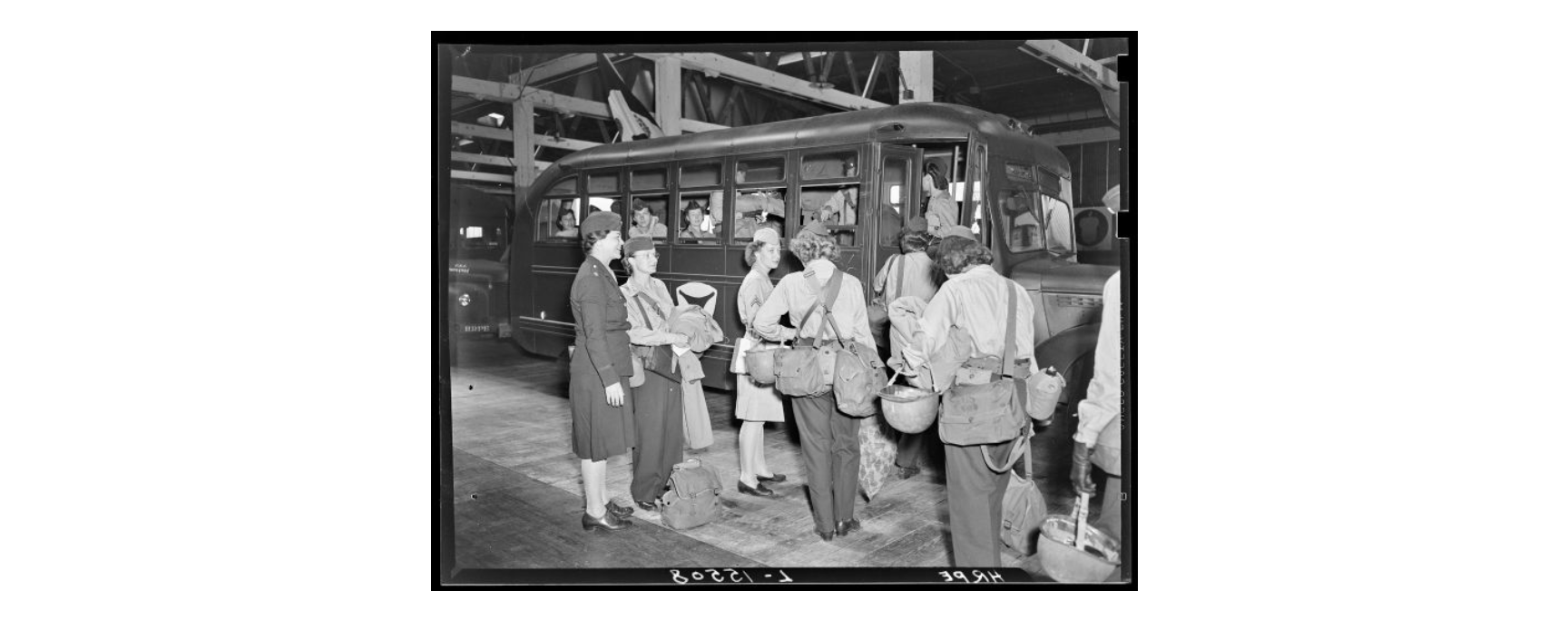The United States Army Nurse Corps (ANC) was formally established by the US Congress in 1901. Women served as nurses in previous wars, but it wasn’t until 1901 that they were officially on Army Payroll. The ANC did not see large numbers of active duty nurses until World War I, when 20,000 registered Nurses joined. Numbers dropped after the end of WWI, and in 1941 there were fewer than 1,000 Nurses in the ANC. After the bombing of Pearl Harbor numbers quickly grew; six months later there were over 12,000 on duty Nurses. Over the course of World War II, over 59,000 nurses served in the ANC, many serving abroad in North Africa, England, Burma and the Southwest Pacific.

While many of the enrollees had nursing experience, few had military experience. A four week training course was instituted for ANC Nurses which taught Army organization; military customs and courtesies; field sanitation; defense against air, chemical, and mechanized attack; personnel administration; military requisitions and correspondence, and property responsibility. Nurses worked in all areas of the army-they went wherever the wounded were, and during WWII they worked close to the front lines. Nurses served under fire in field hospitals and evacuation hospitals, on hospital trains and hospital ships, and as flight nurses on medical transport planes.

The need for nurses in all theaters of operations meant that Nurses were going through ports of embarkation, like Hampton Roads Port of Embarkation (HRPE). Just like other service men and women, the Nurses would receive army housing until the day of embarkation. At HRPE they also would be treated to the luxuries of home, like holiday celebrations, dances, and coffee and doughnuts before being sent abroad, where access to these was limited.

You can see from these pictures that the Nurses had very similar uniforms to the Women’s Army Corps and to the male soldiers in the Army. Field Uniforms were especially similar across the board, and made with function in mind. Often the red cross arm badge was the only thing distinguishing a Nurse from a Soldier.

The need for more hands during the war meant more opportunities and roles available to women than in years past. At the beginning of WWII, nurses held a ‘relative rank’ to male soldiers in the Army. Nurses entered the ANC with a relative rank of second lieutenant. The majority of nurses remained at this rank, though some were promoted to first lieutenant or captain. The highest rank held by an ANC was colonel. While nurses received some benefits of the relative rank, like access to officers clubs and salutes, they did not receive equal pay for rank. However, in 1944, the Army granted its nurses officers’ commissions and full retirement privileges, dependent allowances, and equal pay.

As then as it is now, it’s important to be thankful for all the work nurses to to keep us healthy and safe. If you know a nurse, tell them “Thank you” today!
https://history.army.mil/books/wwii/72-14/72-14.HTM
https://www.americannursinghistory.org/military-nursing-world-war2
http://www.sarahsundin.com/army-nursing-in-world-war-ii-training-and-rank/
